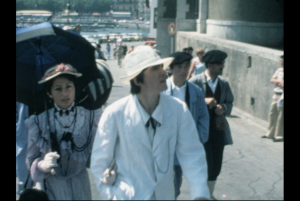
Euskal Ezkontzien erreportaia.
El filme retrata una boda vasca.
The film depicts a Basque wedding.
"Among the pictures awarded Honorable Mention is An Evening at Home, by Arthur E. Ojeda, ACL, a rare achievement in film planning — the family picture of interest outside the family. In it the father arrives home from his work and is greeted by the children. Soon, after the bedtime story, they toddle off upstairs, leaving the domestic stage clear for the grownups' dinner and the subsequently arriving neighbors. There follow a shaker of friendly drinks and a session of jigsaw puzzling after which the guests depart. The last lights go out and the film is over. Mr Ojeda's treatment of this theme is clearly sequenced, told without titles and mostly in closeups. Honorable mention was well deserved by the definite interest which he brought to the subject. With more perfect technical execution, an even greater honor might have been won by this family film." Movie Makers, Dec. 1934, 546.
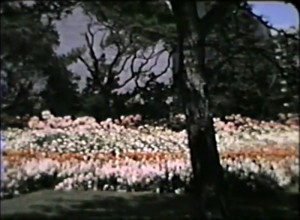
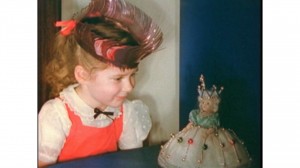
"The story of a little girl and the doll she wanted for Christmas. She asked for a fairy princess, got just a doll, but then the doll comes to life and dances, delighting the disillusioned miss and the film ends on a happy note." PSA Journal, Nov. 1956, 22.
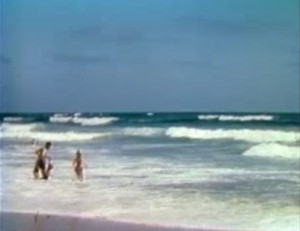
"During five summers from 1957 to 1961, the five-member Barstow family of Wethersfield, Connecticut, set out to visit all 48 of the then United States of America on a series of month-long camping trips. Part I includes seeing famous sites from "America's History" in 24 Eastern, Northern, and Southern states." Archive.org
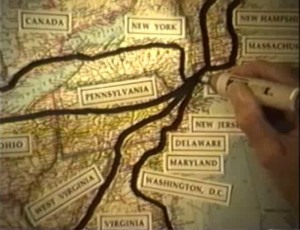
"During five summers from 1957 to 1961, the five-member Barstow family of Wethersfield, Connecticut, set out to visit all 48 of the then United States of America on a series of month-long camping trips. Part II showcases "America's Wonderlands" with 18 National Parks and other exciting attractions in the great Northwest and Southwest." Archive.org
"Family footage shot in a back garden. A woman holds a young girl in her arms and kisses her on the cheek. Also features five children and two women walking along a quiet country road on a windy day. They hold hands and form a circle to have a game of ring-a-ring-a-roses" (NWFA Online Database).
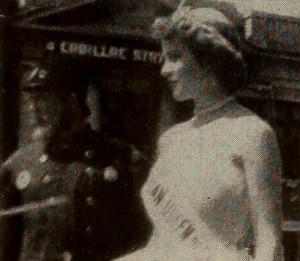
"In Festival Michigan, Cornelius Vanden Broek undertook to record all of the fairs and community festivals that occur in the State of Michigan throughout the year. He was prompted to make this record for the benefit of many friends who were not able to attend them and thus to provide them with a vicarious participation. The usual parades, crowning a queen of this or that, live stock, home preserves, midway attractions and various contests for young folks are all here, done with pleasantly brief sequencing. A lively commentary accompanies the film. On the whole, this rather formidable undertaking results in a pleasant and completely honest endeavor. Mr. Vanden Broek achieved his goal with fine spirit." Movie Makers, Dec. 1953, 334.
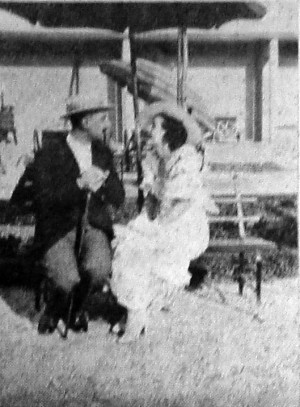
"avant-garde documentary"
"Fiera di tipi, realizzata da Leone Viola con la collaborazione tecnica di Fernando de Marzi, si svolge tutta sullo sfondo della Fiera di Padova ed ha una trama impostata su ben sette personaggi di primo piano. Ma i realizzatori hanno saputo imprimere a ciascuno di essi una fisonomia inconfondibile creando anche due gustose macchiette: ma i caratteri non sono caricati: la vicenda scorre dall'uno all'altro dei personaggi, si imbroglia, si ricompone: la Fiera di Padova è di sfondo all-azione che senza fiera non esisterebbe; tanto tutti gli episodi sono strettamente connessi a quella manifestazione. La fotografia, dovuta a Dodi Calcagno, è in qualche punto un po' oscura, altrove assume un brillante risalto. Le doti narrative dei realizzatori si manifestano in questo film della durata di un'ora, ed è intanto — a parte gli altri pregi del film—non poco. Qualche lieve ritocco al montaggio si renderebbe necessario, allo scopo di raggiungere una completa omogeneità narrrativa. Noi parlando nel nostro passato numero prevedevamo il successo che questo film ha ottenuto, che sarà di incoraggiamento ai giovani volenterosi."
"Fiera di tipi, directed by Leone Viola with the technical collaboration of Fernando de Marzi, takes place against the backdrop of the Padua Fair and has a plot based on seven leading characters. But the creators were able to give each of them an unmistakable physiognomy, also creating two tasty little characters: but the characters are not privileged: the story flows from one character to the other, is cheated, is recomposed: the Fair of Padova is the background to the action that would not exist without the fair; all the episodes are closely related to that event. The photography, by Dodi Calcagno, is at some points a little obscure, elsewhere it takes on a brilliant prominence. The narrative talents of the filmmakers are manifested in this one-hour film, and is meanwhile - apart from the other merits of the film - not insignificant. A few slight adjustments to the editing would be necessary in order to achieve complete narrative homogeneity. We, speaking of it in our past issue, predicted the success this film has achieved, which will be an encouragement to willing young people."
From "Gazzetta di Venezia" republished in "Cine-club Padova," Eco del cinema, n. 130, 1934
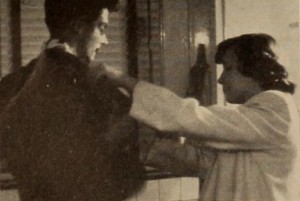
"The trials, tribulations and eventual triumphs of a teen aged young man embarked on his initial evening engagement are engagingly portrayed by John C. Sherard in First Date. Even the traditional nuisance role played by junior members of the girl's family is given a new angle — a trained flea circus on the loose. But this bit of business and others in a basically imaginative comedy are, on occasion, drawn out too much for the best dramatic pace. Outstanding in the film, however, is Mr. Sherard's use of Type A Kodachrome outdoors without the corrective filter to simulate moonlight." Movie Makers, Dec. 1949, 469.
Total Pages: 39